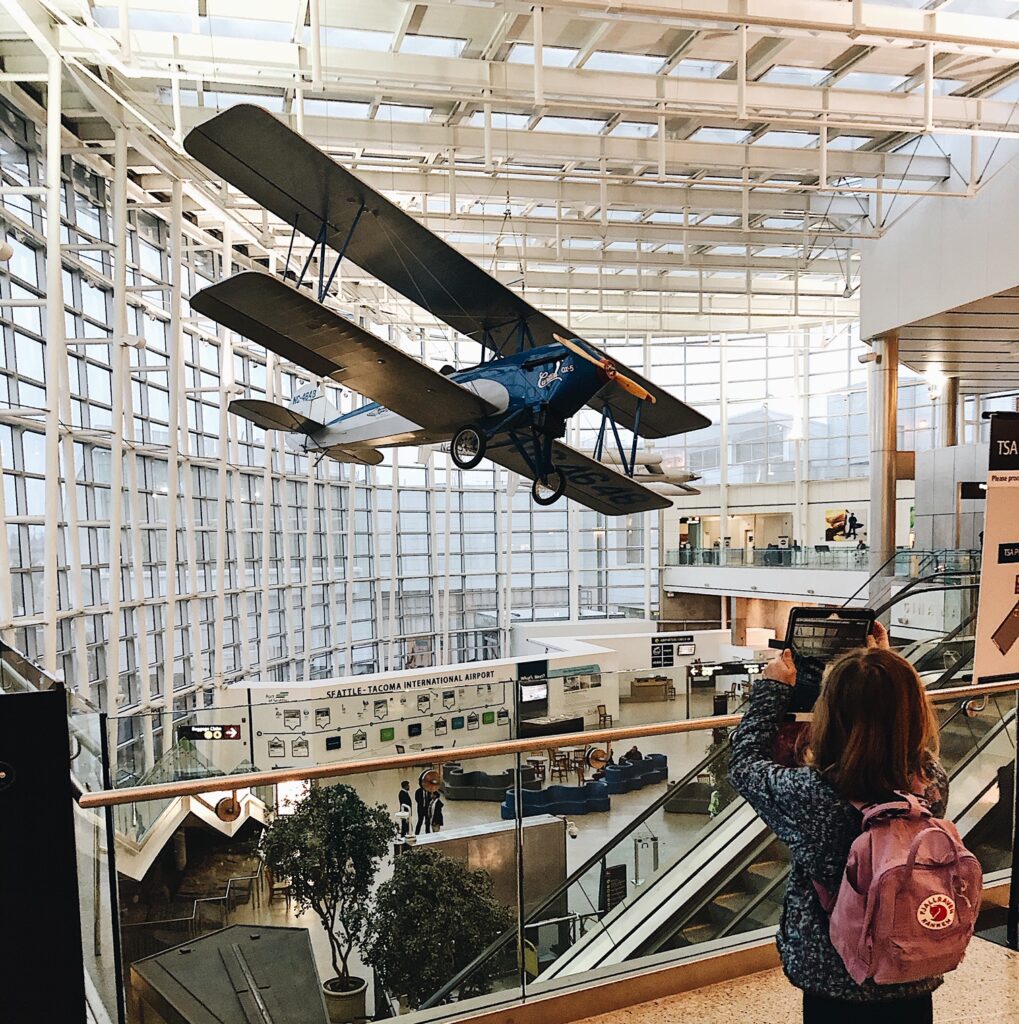
The husbands babysit the grill while nursing craft beers; they circle their favorite conversation of 2020: airports.
These men are middle-aged, middle-class birds of a business traveler feather. They wear: checked oxford shirts, navy sports coats, slip-on loafers. They carry: laptop sleeve, rolling suitcase, noise cancelling headphones, cell phone with Uber app. They call: wives when they land, co-workers while waiting at the gate, servers in the airline lounge to refill the scrambled egg tray and refresh a Bloody Mary. They talk of airmiles and status upgrades.
These are men who circled the globe in great bounds, touching earth for mere minutes before springing back into the skies, leaps between Toronto, Newark, London, Frankfurt, Milan, Budapest, Mumbai, Sydney, Hong Kong, Seoul, Detroit, Dallas, Atlanta. These men have the long-distance stamina of the albatross. (I pick that bird because Smithsonian informs me: “So fully have albatrosses adapted to their oceanic existence that they spend the first six or more years of their long lives, which last upwards of 50 years, without ever touching land.” The albatross seems an apt relative to the sorry flock gathered around the grill.)
These men have not seen an airport since March 15, 2020. These men now stay home, stay safe. They wear: solid-colored oxford shirts, sports shorts or sweat pants, and flip flops. They carry: craft beer, grill tongs, no house keys, cell phones with un-updated Uber app. They call: take-out dinners, relatives on FaceTime, co-workers on Zoom. They talk of missing airports.
Dr. Seuss said, “Sometimes you will never know the value of a moment until it becomes a memory.”
The airport: once a forgettable conduit to a memorable destination, now the spot memory lands and stays awhile.
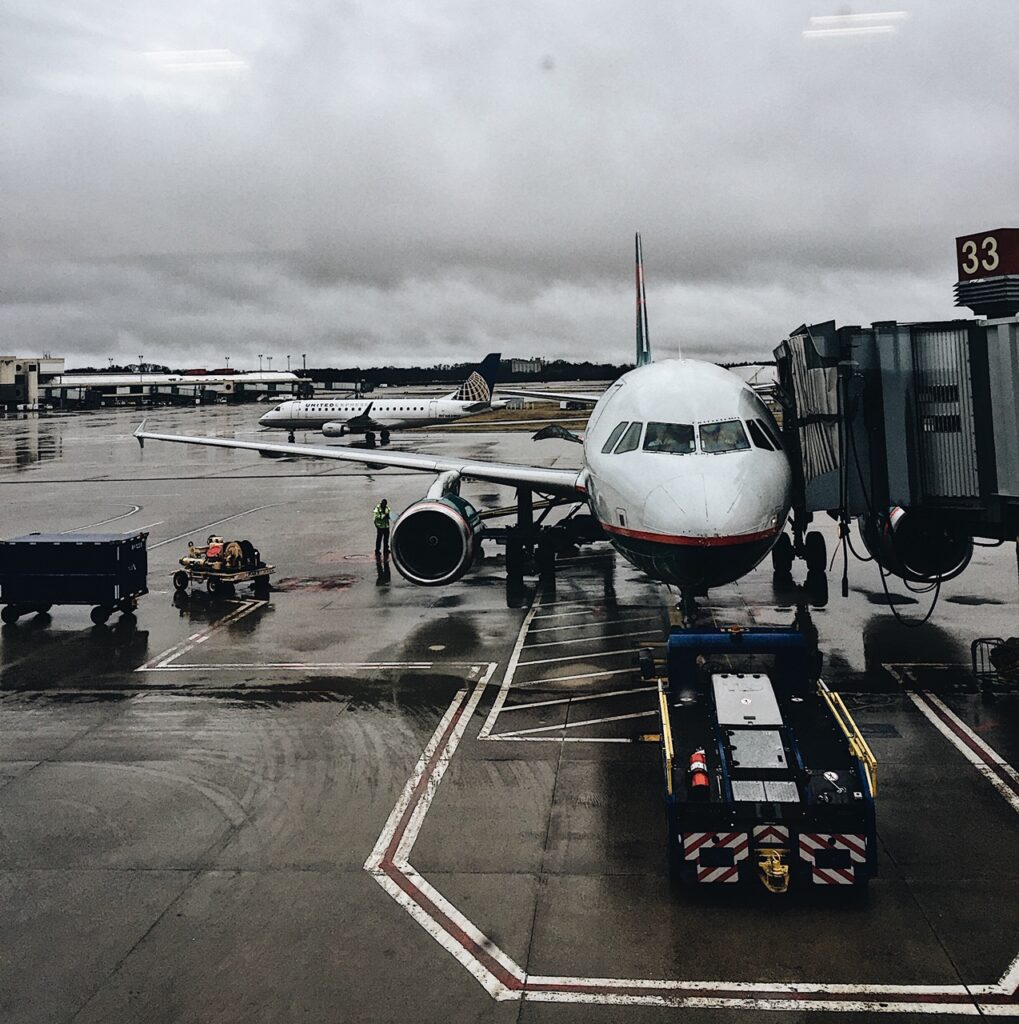
In CHS, there’s a row of white rocking chairs that line the hallway just past security. The tall slatted backs of the chairs are not necessarily more comfortable than the low benches common to gates worldwide, but from those rocking chairs, a weary traveler can pull up the luggage and watch planes line the runway parallel to palm trees and blooming crepe myrtles.
In LAS, there’s a hermetically sealed glass room smack dab in the middle of every terminal hall. Blazing slot machines offer stools where a carry-on can lean while the traveler drags on a cigarette and punches a flashing button of chance.
In PHX, there’s a moving sidewalk between Terminal 3 and Terminal 4 where the wheeled luggage snugs up against knees, moving onward while doing nothing. In the wormhole between 3 and 4, no amount of insulation successfully battles back the desert heat. Travelers and cargo rotate like rotisserie chickens.
In SEA-TAC, there’s $20+ million worth of art. Painted glass panels wrap visitors and luggage with pixelated patches of greens and blues. At Gate A6, the Delta attendant beckons forward Diamond Medallion Members, queuing navy blazers with laptop sleeves to the gate entrance. Next to the line, unnoticed by most, hangs an $8 million painting.
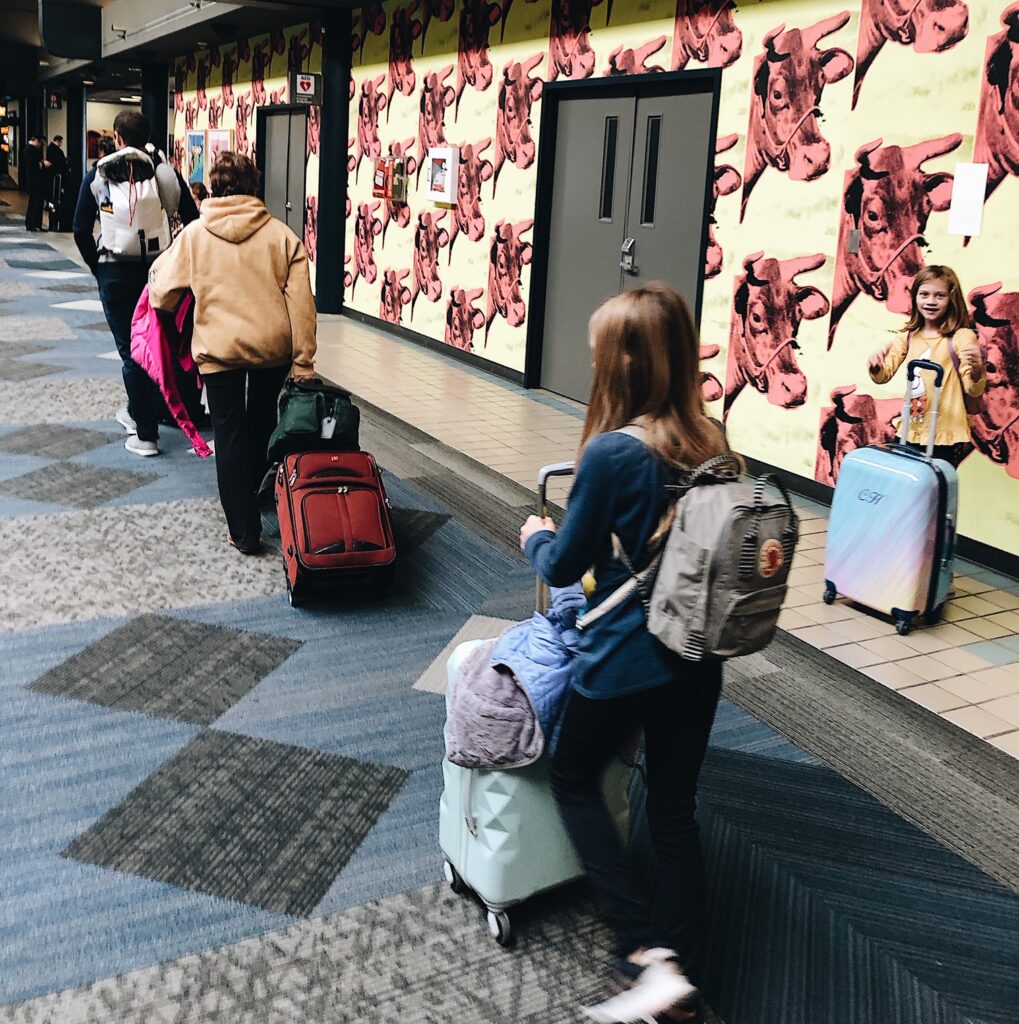
One of my husband’s friends documents his travels by the distinctive carpet patterns in various airports. Ask him to distinguish DTW from DFW by carpet fibers, and he can. Ask him how he knows he’s set foot on home turf by the carpet squares in PIT.
These business travelers, once migratory birds, are now home with pathetically clipped wings. They coo softly to one another between sips of beer, comparing the sizzling burger on the home grill to a Grindhouse Killer Burger at gate T-11 in ATL.
Dr. Seuss, did airports really have to Rest In Peace in order to be appreciated for what they were?
Big Ben, Eiffel Tower, Sydney Opera House, Sagrada Familia, Prague’s Astronomical Clock. All destinations still there for the visiting. Yet the men fluff feathers and cluck over the loss of airports. They miss the news kiosks, advertisements for local attractions, breath mints, gates with letters, security bins, whiffs of duty-free shop air, Starbucks, ciabatta bread sandwiches to-go, train shuttles, parking lot tickets.
These men miss places where a long-flight bird can briefly touch down and refuel to complete the next stretch of soaring travel. The news these days reminds us we are only mid-Pandemic. The length of worldwide restrictions stretches backward to March 15, 2020 and forward to who knows what date. No one yet can spy our destination. So we look for a mid-flight landing pad. We remember airports.
If ever there were a travel prophet of our time, it would be Alain de Botton, annointed as Writer-in-Residence at Heathrow Airport in London in 2009. De Botton stayed in Heathrow as his final destination for a week’s writing “vacation” and observed the world traverse by his temporary residence. In the book that resulted from his extended stay at LHR, A Week at the Airport: A Heathrow Diary, de Botton considers the traveling world from a variety of perspectives.
What’s most chilling about his diary in our airportless world of 2020 is this prophecy: “It seems that most of us could benefit from a brush with a near-fatal disaster to help us recognise the important things that we are too defeated or embittered to recognise from day to day.”
It’s up to the cartographers of our grieving generation to redraw the world map to reflect the importance of airports, something we failed to recognize until what was temporary became a permanent memory. Instead of landmarks, the maps of our memories currently are dotted with islands of airports.
Sometimes you will never know the value of a moment until it becomes a memory.
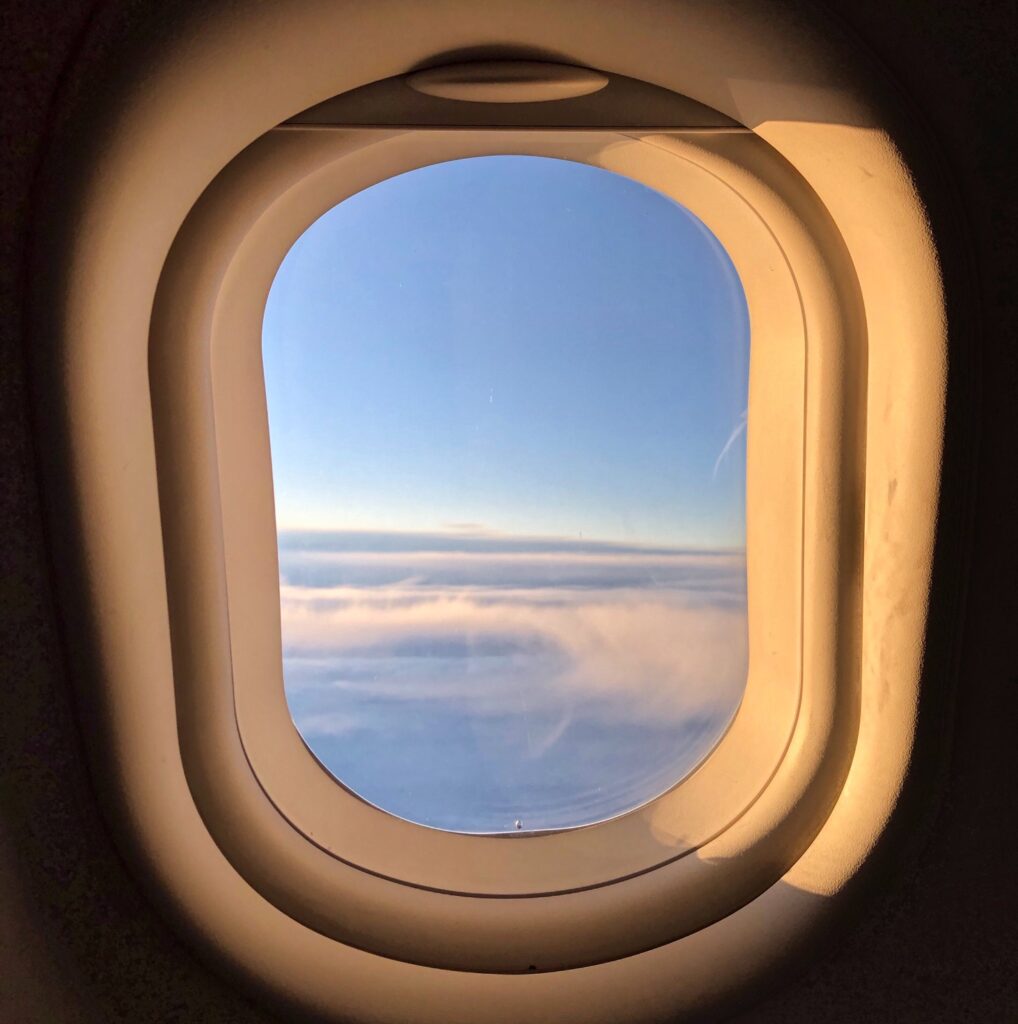
For now, imagine how gratefully we will listen to the the emergency landing instructions on our first flight post-Pandemic. Tears will roll down cheeks to splash on the lapels of navy sports coats as the flight attendant holds aloft the seat belt and triumphantly clicks and unclicks the buckle. Airports, we miss you.

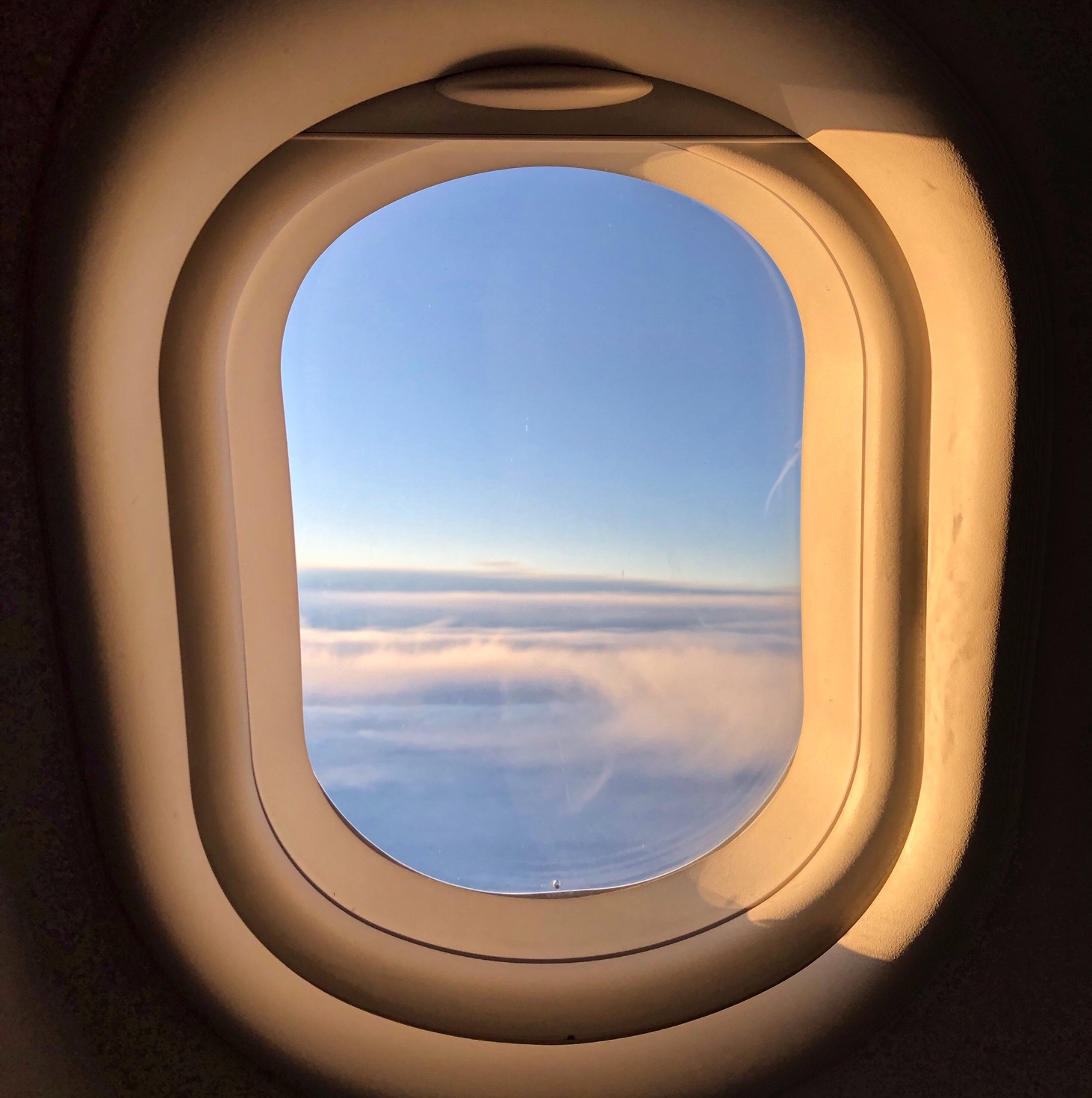
Yes. Well said.